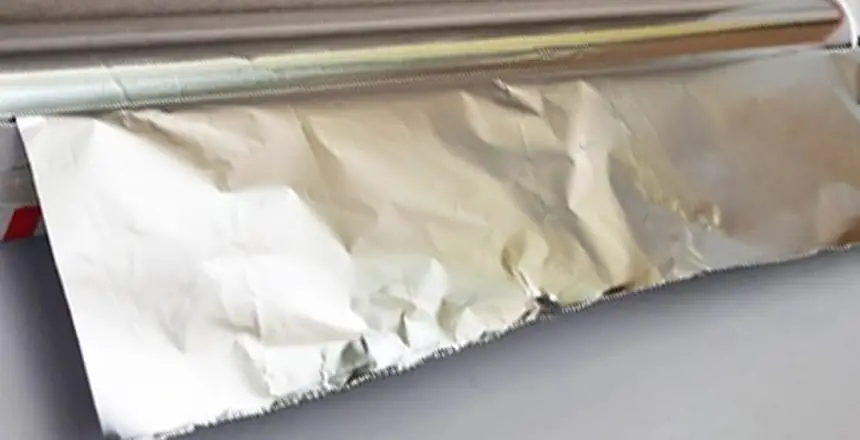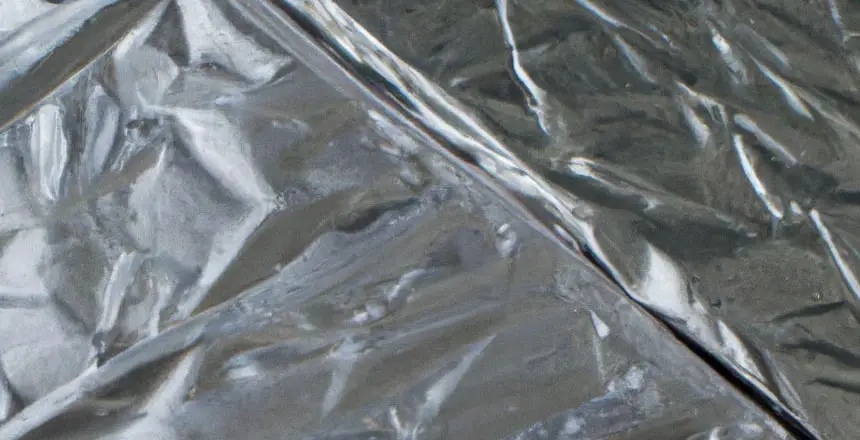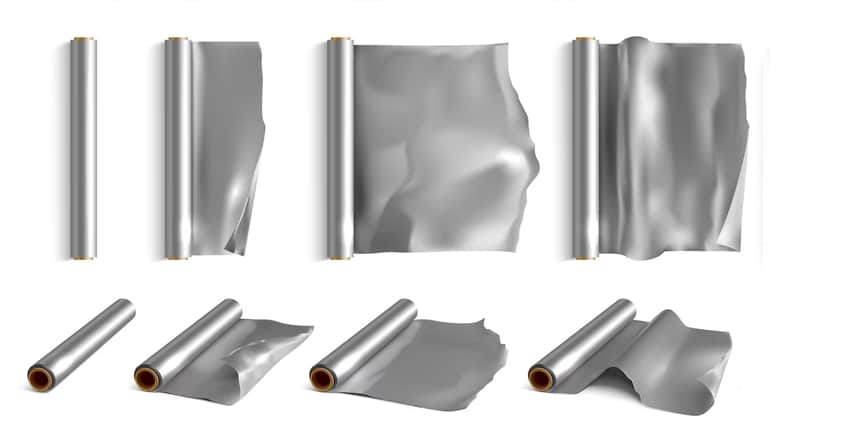Aluminum foil is a common household item used for many different purposes. But when it comes to using aluminum foil, do you know which side should you use?
That’s what we are going to answer today – we will explore whether or not there is an advantage to using one side over the other when it comes to preparing food and other applications related to aluminum foil!
Contents
Is There A Right And Wrong Side Of Aluminum Foil?

Aluminum foil has two sides, a shiny side, and a dull side. In general, there is no difference between the two sides in terms of performance. Therefore, it turns out that there is no such thing as the right side and wrong side of aluminum foil.
Why Does Aluminum Foil Have a Dull Side and a Shiny Side?

So, why does aluminum foil always have a dull side and a shiny one? The reason for this difference in appearance lies in the manufacturing process. Aluminum foil is produced by running sheets of aluminum through a series of rollers, which compress the sheet and make it thinner. During this process, one side of the aluminum is exposed to heat from the rollers and becomes shiny, while the other side remains dull.
Which Side Should You Use?
It is a fact that there is no difference between the two sides in terms of performance, so which side should you use? Basically, it doesn’t matter which side you use when wrapping food items. Both sides will provide an effective barrier to keep food fresh and prevent it from becoming contaminated.
That said, some people may prefer the dull side when wrapping food for aesthetic reasons, such as a better look for presentation purposes. The shiny side may also be preferred for certain tasks, as it is slightly more resistant to abrasion than the dull side. For example, when using aluminum foil to line a baking pan or tray, the shiny side should be used to reflect heat and promote even cooking.
No matter which sides you choose, make sure that your food is properly wrapped and sealed to ensure that it stays fresh and uncontaminated. Aluminum foil is a versatile tool for keeping food safe and fresh, so make sure to use it properly.
Read also:
- How to Cook Salmon in the Oven
- How Long To Bake Chicken Breast At 350
- How To Cook Brats In The Oven
- How Long To Smoke Ribs At 225
Which Side of Aluminum Foil is Toxic? and Why?
You may be unsure about whether to use aluminum foil with the shiny side facing up or down. However, it doesn’t matter because of the fact that there is no toxic side. Both sides are made of the exact same material, thus their performance will be identical. The aesthetics are the sole distinction. The issue has been fixed. Just follow your feelings; the result will still be an amazing meal.
Which Side of Aluminum Foil gets the Hottest?
So is there any side that retains heat better? Is it possible that the shiny side will retain heat less than the dull one because it is believed that the shiny side will reflect some of the radiant heat back? The answer is no. Both sides are equally capable of retaining heat. It is true that a shiny surface will reflect some of the heat radiation, but keep in mind that aluminum is an excellent conductor of heat. Therefore, it conducts all other forms of heat very efficiently while reflecting some radiant heat.
Which Side of The Foil Goes Up?
The shiny side should be down, facing the food, and the dull side should be up when cooking meals wrapped or covered in aluminum foil since it has a shiny and dull side. This is due to its greater reflectiveness, the shiny side will reflect more heat radiation than the dull side. Is this real?
The shiny side should be down, according to the majority of sources. However, some more recent sources claim that it is irrelevant which side of the aluminum foil is facing up. This is also a very controversial issue.
The shiny side of aluminum foil is really just somewhat more reflective than the dull side. Even while the shiny side will reflect a tiny bit more energy, the difference is so negligible that it has no practical impact on cooking. Cooking with the dull side out is perhaps still a bit more effective than saying there is no impact at all. There should be minimal noticeable variation in cooking times, though, because the difference is so small when measured over time at high temperatures.
Recipes Where Aluminum is Used
If a chef is prepared to investigate its possible uses in the kitchen, aluminum foil may be a flexible tool. For instance, this recipe for beef rolls offers the choice of baking, boiling, or even frying the rolls once they have been wrapped in foil. While this is undoubtedly rare, it demonstrates how flexible foil can be when used with conventional cooking techniques to maintain food in a uniform shape. This chicken tikka masala and this pumpkin risotto stick to employing foil to keep a baking sheet and the oven free of food debris while guaranteeing the moisture levels of the dish will be high when done.
FAQs
Which Side of Aluminum Foil do I Use For Baked Potatoes?
Potatoes are cooked by absorbing heat through radiation and convection while foil has two sides with varying reflectivities, the potatoes will receive varying quantities of radiant heat when the different sides of the foil are facing outwards during cooking. It is clear that the potato will be cooked more quickly if the shiny side of the aluminum foil comes into contact with it rather than the dull side. However, as was already said, this distinction is not significant.
Why is One Side of the Foil Shiny?
The shiny side of aluminum foil is actually the result of a manufacturing process. The shiny side gets its texture from the rolling process and not from any special coating applied to it. This is why both sides are equally capable of keeping heat, as they are made of the same material.
How is Aluminum Foil Made?
The techniques for producing foil that we now use gained popularity over time. Aluminum is made into modern foil by rolling it through a continuous mill, which makes the metal longer and thinner. This procedure reduces thickness, and at the conclusion of the production line, the aluminum product is twisted into a coil. Then, in cold rolling mills, these coils are cold rolled. The coils can be heated in a furnace to achieve the necessary mechanical qualities or to soften them for additional cold rolling.
Final Thought
In conclusion, aluminum foil can be used in a variety of recipes and cooking techniques, but the only difference between the sides of aluminum foil is aesthetic. Therefore, if you are finding which sides of aluminum foil should you use, the answer is you can use both sides. As long as the foil is in contact with the food, it will cook evenly and effectively.
Now that you know both sides of aluminum foil can be used, there’s no doubt that your kitchen preparedness will be unrivaled!
